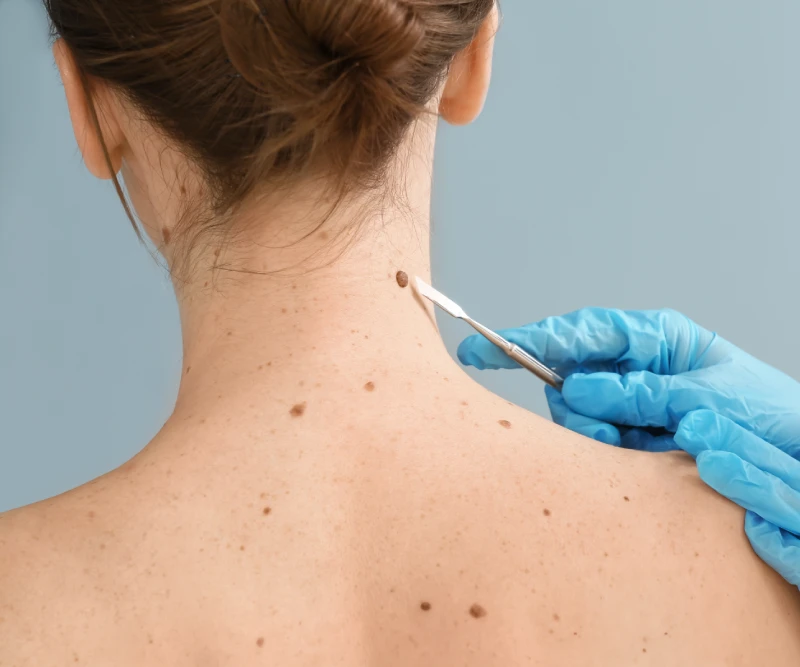Moles and nevi
Moles are common growths that occur on the skin. They represent collections of specialized skin cells called “nevus” cells. The medical term for a mole is “nevus” for a single mole or “nevi” for multiple moles.
They can be present at birth or can develop as you age and come later on in life. Nevi come in a variety of sizes, shapes, colours, and textures. You may not have any moles on your skin, or you may have hundreds. Any surface of the skin can have moles, including the scalp, palms, soles, scalp, mouth, and genitals.
Over time many moles remain the same, but moles can evolve and change in size, shape, colour or texture. Most moles do not have any symptoms, but they can get irritated, become painful or itchy.
Entirely harmless moles are commonly referred to as “beauty moles.” Moles do have the propensity to be precursors for skin cancer. Change in a mole (size, shape, color, texture, symptom) is the most critical feature that may suggest a mole is pre-cancerous or cancerous. Dysplastic nevi are the older term used to describe abnormal moles. Melanoma is the deadliest form of skin cancer that we worry about.
If a mole on your skin changes in any way, it is vital to make an appointment with a dermatologist to have it checked.
Dermatologists are experts in determining whether your particular mole demonstrates cause for concern. If your dermatologist is concerned about a specific mole on your skin, a small in-office procedure called a biopsy can be performed to make a definite diagnosis.
Keep in mind that the vast majority of moles evaluated are benign! Patients are often interested in removing moles because they don’t like the way they look or feel. Patients tell us their moles make them feel unattractive and do not consider them to be beauty moles.
We use a variety of different techniques to remove moles. Our removals are performed by our dermatologist, not a technician, not an esthetician. Mole removals should not be performed in spas!
Our advanced removal techniques utilize lasers, hyfrecators, electrocautery, and surgical scalpels blades to ensure delivery of the best possible outcomes, limiting leftover marks, pigmentation, and scars.
>>>>>>are common skin growths that can be treated by dermatologists. Moles or nevi are collections of skin cell that produce skin growths that are usually brown and black in colour dark, raised growths that can appear anywhere on the body, while nevi are a type of mole that can be present at birth or develop later in life. Some moles and nevi can become cancerous, so it is important to have them checked regularly by a dermatologist. If a mole or nevus is determined to be at risk for skin cancer, the dermatologist may recommend removal through excision or a specialized surgical procedure called Mohs surgery. In cases where the mole or nevus is not cancerous but is causing discomfort or self-consciousness, the dermatologist may recommend removal through laser therapy or surgical excision. Your dermatologist will recommend the best treatment option based on the size, location, and type of growth, to ensure the best possible outcome.

